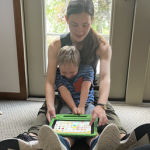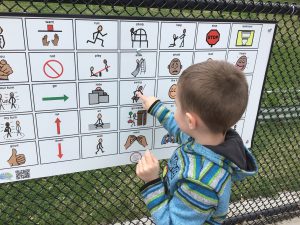
Playground communication boards are a wonderful addition to parks and recreation spaces. They empower nonverbal children and others who benefit from alternative communication methods to express themselves and participate in play and social interactions. However, there’s a challenge that many communities face after the installation of these boards: ensuring they are regularly used and appreciated. Communication boards sometimes remain underutilized, despite the dedication that goes into their design and placement.
Let’s explore why playground communication boards may be underutilized, why increased engagement from community members is essential, and some ideas on how to make these boards an integrated and meaningful part of playground experiences.
Why Are Playground Communication Boards Underutilized?
The problem isn’t in the quality of the boards themselves but often in the understanding and awareness of how to use them. Here are a few key reasons they go underused:
Lack of Familiarity:
Many parents, caregivers, and even children are simply unfamiliar with how these boards work or why they’re beneficial. This is especially true for people who may not have experience with alternative or augmentative communication (AAC).Uncertainty About Their Purpose:
Community members who aren’t directly impacted by communication challenges may not understand the role these boards play in inclusive communication. Without a strong understanding, they may overlook or ignore the boards altogether.Insufficient Promotion and Education:
Sometimes, communication boards are installed with little follow-up to help families and caregivers understand how they can be used. Without proper promotion and education, even the most thoughtfully designed boards may go unnoticed.
Increasing Engagement: How Can We Help?
To encourage more active use, communities need strategies to make communication boards more visible and valuable to everyone who visits the playground. Here are some actionable ideas:
Educational Campaigns and Demonstrations
- Hosting community events or partnering with local organizations to run workshops can be incredibly effective. Simple demonstrations of how to use the boards can go a long way in educating parents, caregivers, and even children. By seeing these boards in action, people understand their purpose and feel more comfortable using them.
- Local schools or disability advocacy groups can also collaborate on these educational events to reach a broader audience. Demonstrations can include mock play sessions, where volunteers use the board in different scenarios, or informational booths that explain how communication boards support children’s social and emotional
Encourage Peer Involvement
- Encouraging children to use the boards with their friends can promote natural play and interaction. Teaching children to incorporate the boards in their games and activities not only helps nonverbal children feel included but also creates a ripple effect, as these kids often share what they learn with others.
- One way to encourage peer involvement is through “play ambassadors,” where a few children at the playground (or local teens during events) are given a short orientation on how the boards work and can help other kids learn to use them. This is a great way to build excitement and increase usage.
Social Media Awareness
- Social media is a powerful tool for raising awareness. By creating engaging posts that highlight the benefits and usage of playground communication boards, we can reach a larger audience and educate the community on how to use them.
- Posting videos of the boards in use, sharing personal stories of families who benefit from them, and posting regular reminders that these resources are available are all great strategies. By tagging local government pages, schools, and community groups, we can amplify the reach and encourage more people to visit and engage with the boards.
Involve Community Members in Installation
- When community members feel connected to the installation of these boards, they’re more likely to use and promote them. Invite families, educators, and local businesses to sponsor, contribute, or participate in the installation. For instance, creating a mural around the board or holding an “installation day” can increase awareness and foster a sense of ownership.
Moving Forward Together
Playground communication boards are more than just a tool; they’re a bridge to inclusive play and social interaction. With thoughtful engagement, education, and promotion, we can move beyond mere installation and ensure that these boards make a lasting, meaningful impact. Let’s work together to make playground communication boards a celebrated part of every community, where every child can feel seen, heard, and included.










1 Comment
[…] is a cornerstone of accessibility. Communication boards and therapeutic resources are vital tools for individuals with communication […]
Comments are closed for this article!